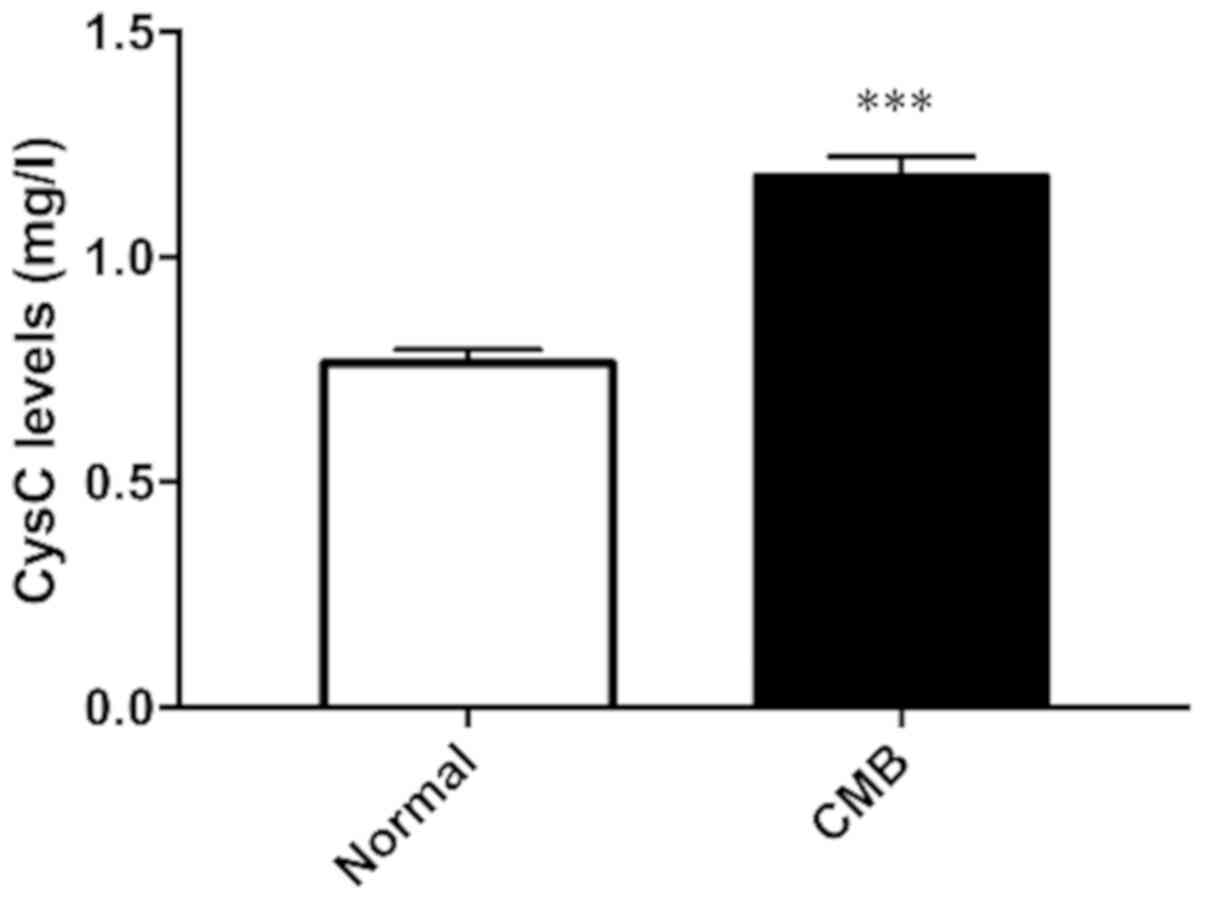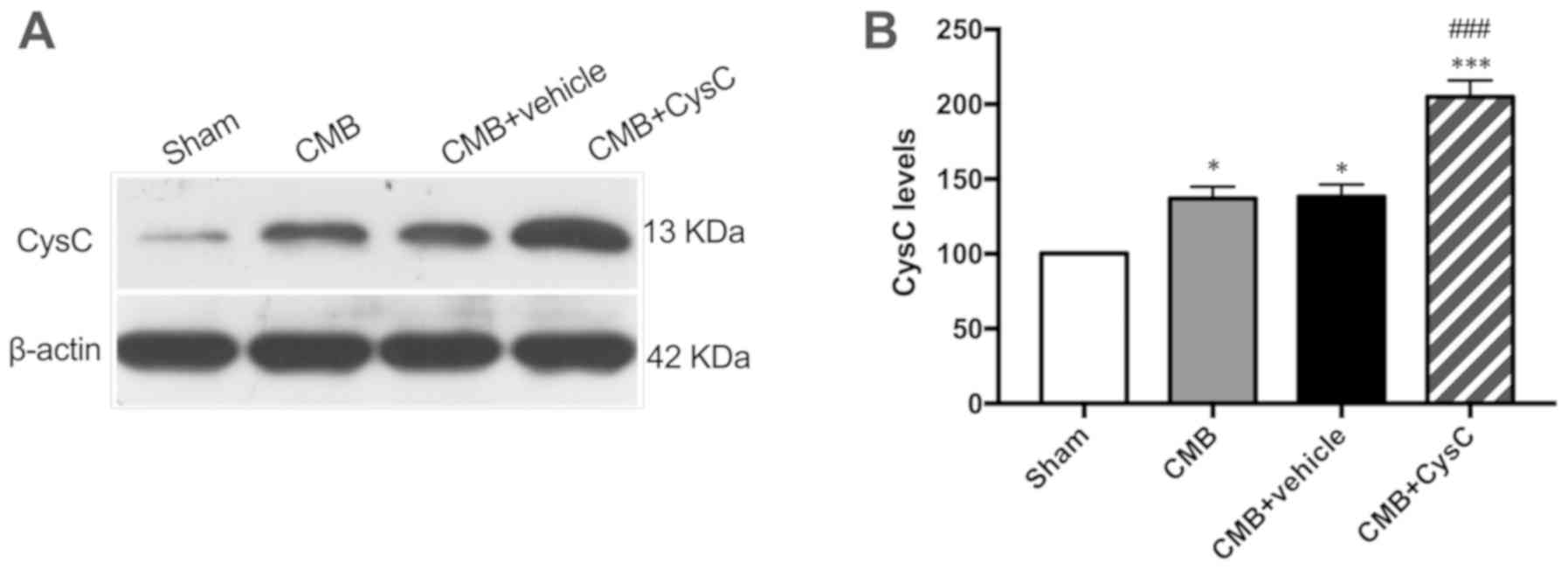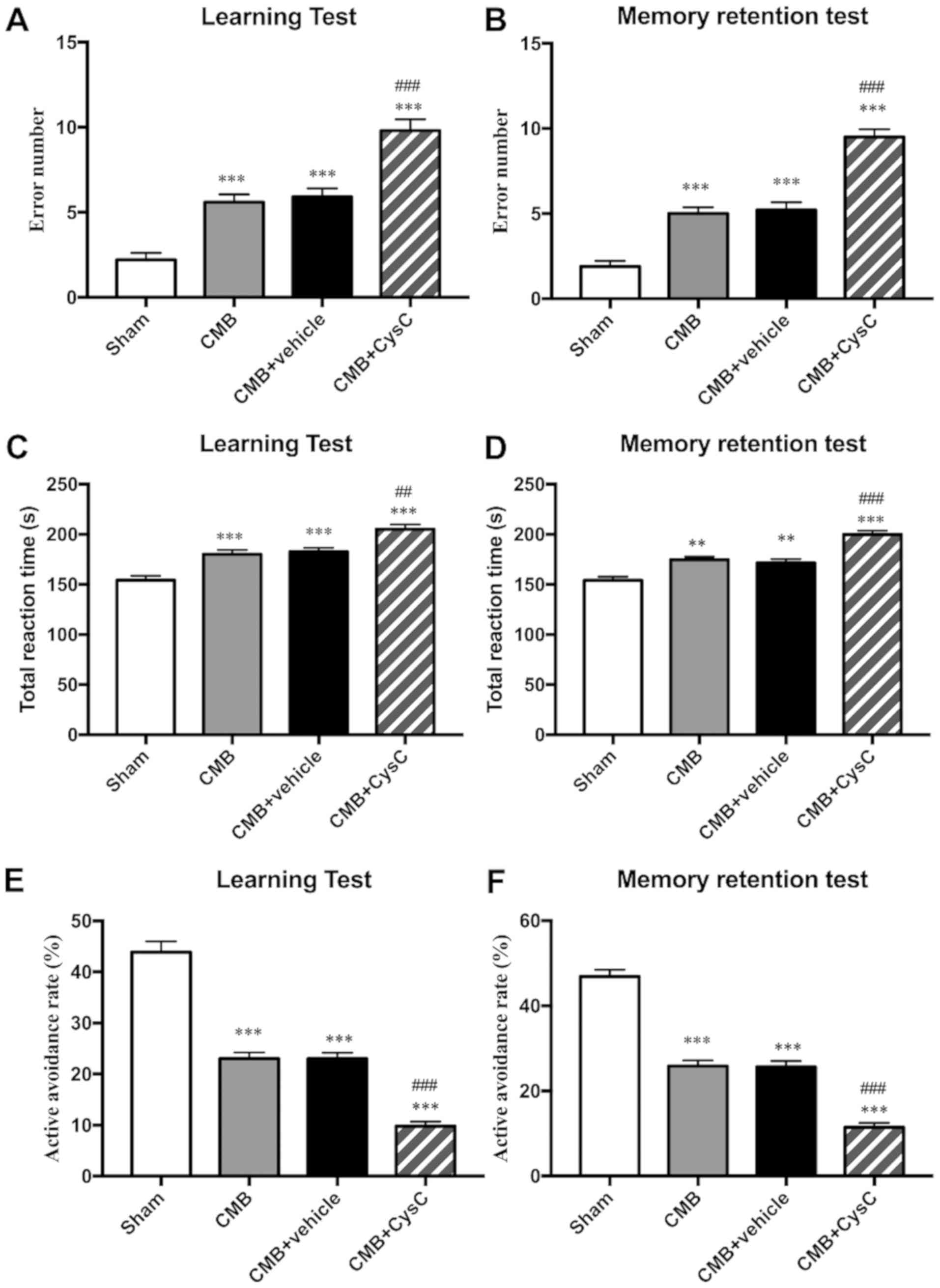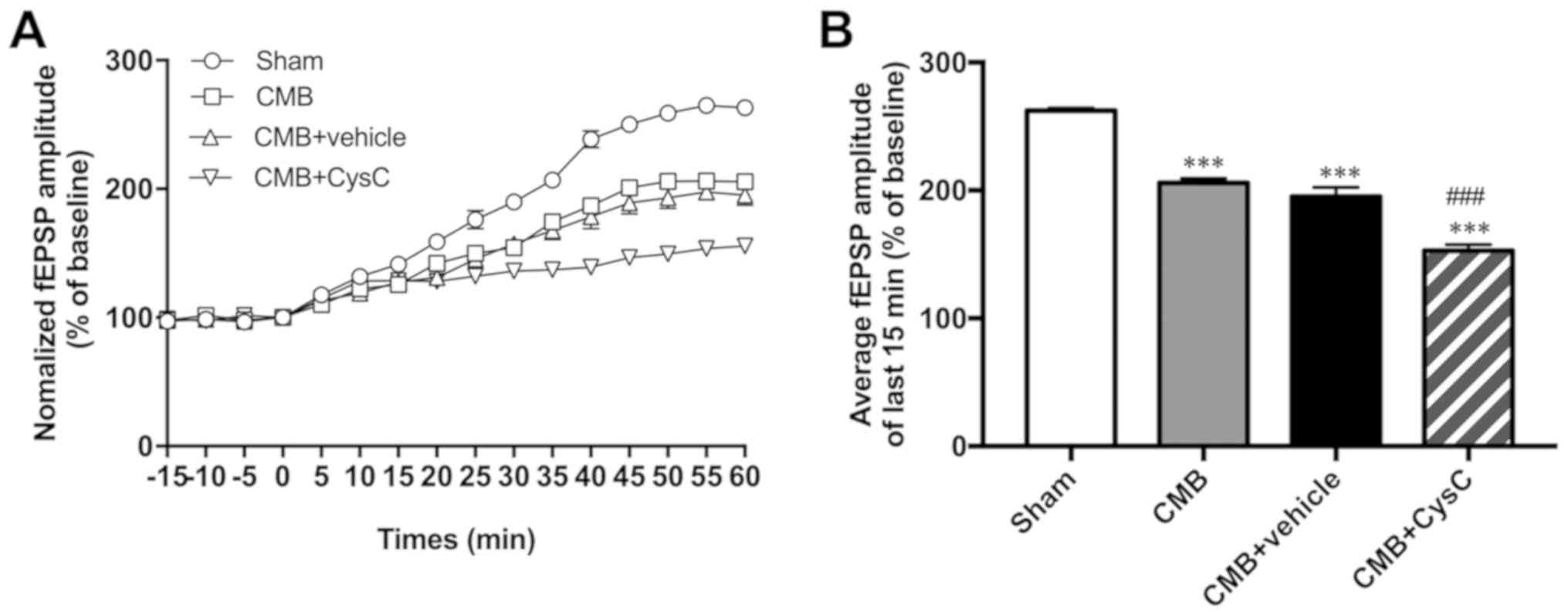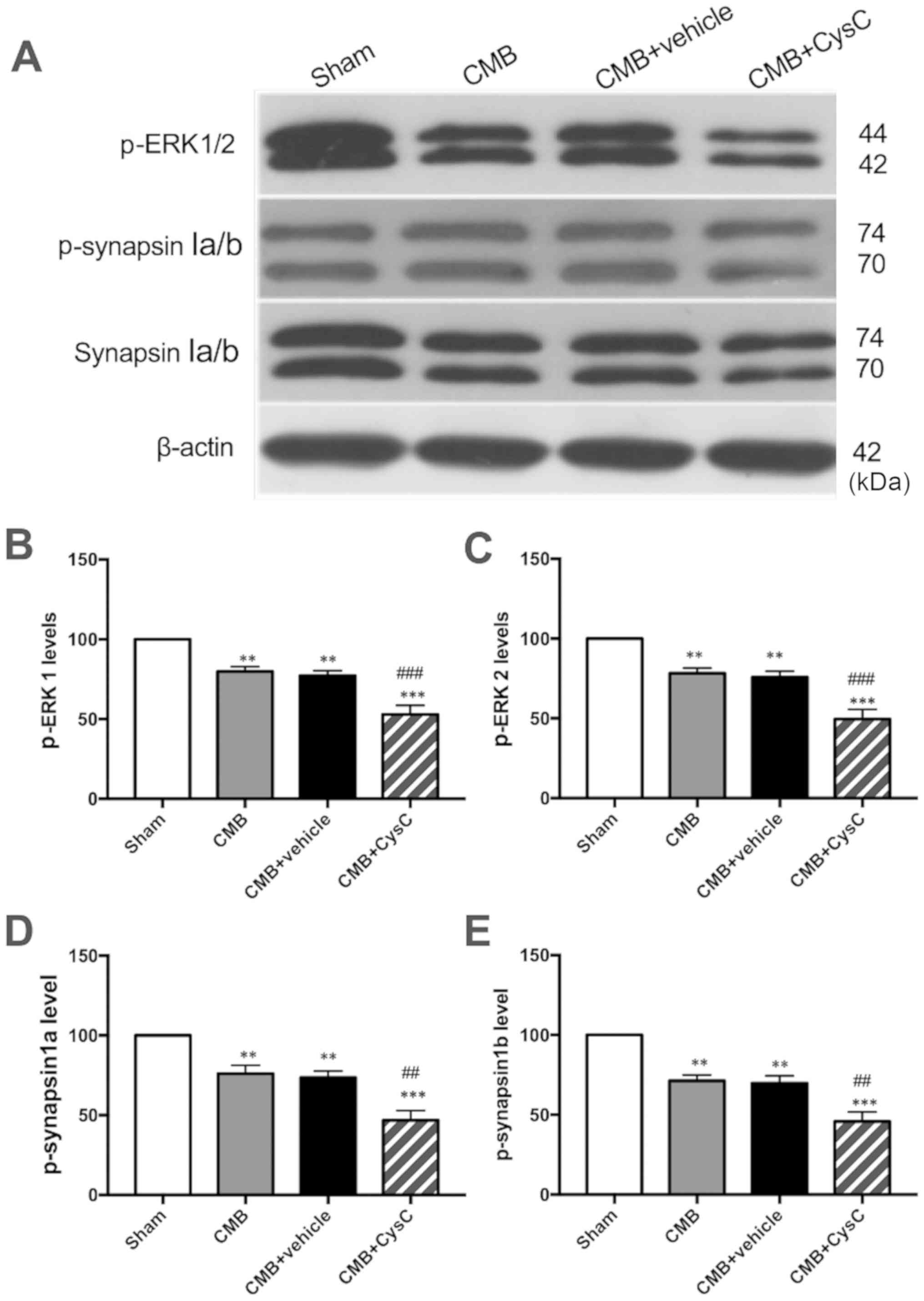|
1
|
Moulin S and Cordonnier C: Role of
cerebral microbleeds for intracerebral haemorrhage and dementia.
Curr Neurol Neurosci Rep. 19:512019. View Article : Google Scholar : PubMed/NCBI
|
|
2
|
Cordonnier C, Al-Shahi Salman R and
Wardlaw J: Spontaneous brain microbleeds: Systematic review,
subgroup analyses and standards for study design and reporting.
Brain. 130:1988–2003. 2007. View Article : Google Scholar : PubMed/NCBI
|
|
3
|
Daugherty AM and Raz N: Incident risk and
progression of cerebral microbleeds in healthy adults: A
multi-occasion longitudinal study. Neurobiol Aging. 59:22–29. 2017.
View Article : Google Scholar : PubMed/NCBI
|
|
4
|
Vernooij MW, van der Lugt A, Ikram MA,
Wielopolski PA, Niessen WJ, Hofman A, Krestin GP and Breteler MM:
Prevalence and risk factors of cerebral microbleeds: The Rotterdam
Scan Study. Neurology. 70:1208–1214. 2008. View Article : Google Scholar : PubMed/NCBI
|
|
5
|
Charidimou A, Imaizumi T, Moulin S, Biffi
A, Samarasekera N, Yakushiji Y, Peeters A, Vandermeeren Y, Laloux
P, Baron JC, et al: Brain hemorrhage recurrence, small vessel
disease type, and cerebral microbleeds: A meta-analysis. Neurology.
89:820–829. 2017. View Article : Google Scholar : PubMed/NCBI
|
|
6
|
Charidimou A, Kakar P, Fox Z and Werring
DJ: Cerebral microbleeds and recurrent stroke risk: Systematic
review and meta-analysis of prospective ischemic stroke and
transient ischemic attack cohorts. Stroke. 44:995–1001. 2013.
View Article : Google Scholar : PubMed/NCBI
|
|
7
|
Cordonnier C and van der Flier WM: Brain
microbleeds and Alzheimer's disease: Innocent observation or key
player? Brain. 134:335–344. 2011. View Article : Google Scholar : PubMed/NCBI
|
|
8
|
Staekenborg SS, Koedam EL, Henneman WJ,
Stokman P, Barkhof F, Scheltens P and van der Flier WM: Progression
of mild cognitive impairment to dementia: Contribution of
cerebrovascular disease compared with medial temporal lobe atrophy.
Stroke. 40:1269–1274. 2009. View Article : Google Scholar : PubMed/NCBI
|
|
9
|
Dierksen GA, Skehan ME, Khan MA, Jeng J,
Nandigam RN, Becker JA, Kumar A, Neal KL, Betensky RA, Frosch MP,
et al: Spatial relation between microbleeds and amyloid deposits in
amyloid angiopathy. Ann Neurol. 68:545–548. 2010. View Article : Google Scholar : PubMed/NCBI
|
|
10
|
Gurol ME, Dierksen G, Betensky R, Gidicsin
C, Halpin A, Becker A, Carmasin J, Ayres A, Schwab K, Viswanathan
A, et al: Predicting sites of new hemorrhage with amyloid imaging
in cerebral amyloid angiopathy. Neurology. 79:320–326. 2012.
View Article : Google Scholar : PubMed/NCBI
|
|
11
|
Greenberg SM, Vernooij MW, Cordonnier C,
Viswanathan A, Al-Shahi Salman R, Warach S, Launer LJ, Van Buchem
MA and Breteler MM; Microbleed Study Group, : Cerebral microbleeds:
A guide to detection and interpretation. Lancet Neurol. 8:165–174.
2009. View Article : Google Scholar : PubMed/NCBI
|
|
12
|
Lawrence AJ, Patel B, Morris RG, MacKinnon
AD, Rich PM, Barrick TR and Markus HS: Mechanisms of cognitive
impairment in cerebral small vessel disease: Multimodal MRI results
from the St. George's cognition and neuroimaging in stroke (SCANS)
study. PLoS One. 8:e610142013. View Article : Google Scholar : PubMed/NCBI
|
|
13
|
Lawrence AJ, Chung AW, Morris RG, Markus
HS and Barrick TR: Structural network efficiency is associated with
cognitive impairment in small-vessel disease. Neurology.
83:304–311. 2014. View Article : Google Scholar : PubMed/NCBI
|
|
14
|
Poels MM, Ikram MA, van der Lugt A, Hofman
A, Niessen WJ, Krestin GP, Breteler MM and Vernooij MW: Cerebral
microbleeds are associated with worse cognitive function: The
Rotterdam Scan Study. Neurology. 78:326–333. 2012. View Article : Google Scholar : PubMed/NCBI
|
|
15
|
Leem AY, Park MS, Park BH, Jung WJ, Chung
KS, Kim SY, Kim EY, Jung JY, Kang YA, Kim YS, et al: Value of serum
Cystatin C measurement in the diagnosis of sepsis-induced kidney
injury and prediction of renal function recovery. Yonsei Med J.
58:604–612. 2017. View Article : Google Scholar : PubMed/NCBI
|
|
16
|
Benndorf RA: Renal Biomarker and
Angiostatic Mediator? Cystatin C as a negative regulator of
vascular endothelial cell homeostasis and angiogenesis. J Am Heart
Assoc. 7:e0109972018. View Article : Google Scholar : PubMed/NCBI
|
|
17
|
Ekström U, Wallin H, Lorenzo J, Holmqvist
B, Abrahamson M and Avilés FX: Internalization of cystatin C in
human cell lines. FEBS J. 275:4571–4582. 2008. View Article : Google Scholar : PubMed/NCBI
|
|
18
|
Mathews PM and Levy E: Cystatin C in aging
and in Alzheimer's disease. Ageing Res Rev. 32:38–50. 2016.
View Article : Google Scholar : PubMed/NCBI
|
|
19
|
Oh MY, Lee H, Kim JS, Ryu WS, Lee SH, Ko
SB, Kim C, Kim CH and Yoon BW: Cystatin C, a novel indicator of
renal function, reflects severity of cerebral microbleeds. BMC
Neurol. 14:1272014. View Article : Google Scholar : PubMed/NCBI
|
|
20
|
Yang S, Cai J, Lu R, Wu J, Zhang M and
Zhou X: Association between serum cystatin C level and total
magnetic resonance imaging burden of cerebral small vessel disease
in patients with acute lacunar stroke. J Stroke Cerebrovasc Dis.
26:186–191. 2017. View Article : Google Scholar : PubMed/NCBI
|
|
21
|
Zhang JB, Jü XH, Wang J, Sun HR and Li F:
Serum cystatin C and cerebral microbleeds in patients with acute
cerebral stroke. J Clin Neurosci. 21:268–273. 2014. View Article : Google Scholar : PubMed/NCBI
|
|
22
|
Zhang JB, Liu LF, Li ZG, Sun HR and Jü XH:
Associations between biomarkers of renal function with cerebral
microbleeds in hypertensive patients. Am J Hypertens. 28:739–745.
2015. View Article : Google Scholar : PubMed/NCBI
|
|
23
|
Fang Z, Deng J, Wu Z, Dong B, Wang S, Chen
X, Nie H, Dong H, Xiong L and Cystatin C: Cystatin C is a crucial
endogenous protective determinant against stroke. Stroke.
48:436–444. 2017. View Article : Google Scholar : PubMed/NCBI
|
|
24
|
Zou J, Chen Z, Wei X, Chen Z, Fu Y, Yang
X, Chen D, Wang R, Jenner P, Lu JH, et al: Cystatin C as a
potential therapeutic mediator against Parkinson's disease via
VEGF-induced angiogenesis and enhanced neuronal autophagy in
neurovascular units. Cell Death Dis. 8:e28542017. View Article : Google Scholar : PubMed/NCBI
|
|
25
|
Kono S, Adachi H, Enomoto M, Fukami A,
Kumagai E, Nakamura S, Nohara Y, Morikawa N, Nakao E, Sakaue A, et
al: Impact of cystatin C and microalbuminuria on cognitive
impairment in the population of community-dwelling Japanese.
Atherosclerosis. 265:71–77. 2017. View Article : Google Scholar : PubMed/NCBI
|
|
26
|
Yin Z, Yan Z, Liang Y, Jiang H, Cai C,
Song A, Feng L and Qiu C: Interactive effects of diabetes and
impaired kidney function on cognitive performance in old age: A
population-based study. BMC Geriatr. 16:72016. View Article : Google Scholar : PubMed/NCBI
|
|
27
|
Stephan Y, Sutin AR and Terracciano A:
Subjective age and cystatin C among older adults. J Gerontol B
Psychol Sci Soc Sci. 74:382–388. 2019. View Article : Google Scholar : PubMed/NCBI
|
|
28
|
Wei Y, Wei YK and Zhu J: Early markers of
kidney dysfunction and cognitive impairment among older adults. J
Neurol Sci. 375:209–214. 2017. View Article : Google Scholar : PubMed/NCBI
|
|
29
|
Park YS, Chung MS and Choi BS: MRI
assessment of cerebral small vessel disease in patients with
spontaneous intracerebral hemorrhage. Yonsei Med J. 60:774–781.
2019. View Article : Google Scholar : PubMed/NCBI
|
|
30
|
Tóth A, Berente Z, Bogner P, Környei B,
Balogh B, Czeiter E, Amrein K, Dóczi T, Büki A and Schwarcz A:
Cerebral microbleeds temporarily become less visible or invisible
in acute susceptibility weighted magnetic resonance imaging: A Rat
Study. J Neurotrauma. 36:1670–1677. 2019. View Article : Google Scholar : PubMed/NCBI
|
|
31
|
Liu Y, Li J, Wang Z, Yu Z and Chen G:
Attenuation of early brain injury and learning deficits following
experimental subarachnoid hemorrhage secondary to cystatin C:
Possible involvement of the autophagy pathway. Mol Neurobiol.
49:1043–1054. 2014. View Article : Google Scholar : PubMed/NCBI
|
|
32
|
Li XH, Matsuura T, Liu RH, Xue M and Zhuo
M: Calcitonin gene-related peptide potentiated the excitatory
transmission and network propagation in the anterior cingulate
cortex of adult mice. Mol Pain. Feb 28–2019.(Epub ahead of print).
doi: 10.1177/1744806919832718, 2019. View Article : Google Scholar
|
|
33
|
Pantoni L: Cerebral small vessel disease:
From pathogenesis and clinical characteristics to therapeutic
challenges. Lancet Neurol. 9:689–701. 2010. View Article : Google Scholar : PubMed/NCBI
|
|
34
|
Dey AK, Stamenova V, Turner G, Black SE
and Levine B: Pathoconnectomics of cognitive impairment in small
vessel disease: A systematic review. Alzheimers Dement. 12:831–845.
2016. View Article : Google Scholar : PubMed/NCBI
|
|
35
|
Roseborough A, Ramirez J, Black SE and
Edwards JD: Associations between amyloid β and white matter
hyperintensities: A systematic review. Alzheimers Dement.
13:1154–1167. 2017. View Article : Google Scholar : PubMed/NCBI
|
|
36
|
Akoudad S, Wolters FJ, Viswanathan A, de
Bruijn RF, van der Lugt A, Hofman A, Koudstaal PJ, Ikram MA and
Vernooij MW: Association of cerebral microbleeds with cognitive
decline and dementia. JAMA Neurol. 73:934–943. 2016. View Article : Google Scholar : PubMed/NCBI
|
|
37
|
Cai Z, Wang C, He W, Tu H, Tang Z, Xiao M
and Yan LJ: Cerebral small vessel disease and Alzheimer's disease.
Clin Interv Aging. 10:1695–1704. 2015. View Article : Google Scholar : PubMed/NCBI
|
|
38
|
Love S and Miners JS: Small vessel
disease, neurovascular regulation and cognitive impairment:
Post-mortem studies reveal a complex relationship, still poorly
understood. Clin Sci (Lond). 131:1579–1589. 2017. View Article : Google Scholar : PubMed/NCBI
|
|
39
|
Cobar LF, Yuan L and Tashiro A: Place
cells and long-term potentiation in the hippocampus. Neurobiol
Learn Mem. 138:206–214. 2017. View Article : Google Scholar : PubMed/NCBI
|
|
40
|
Lømo T: Discovering long-term potentiation
(LTP) - recollections and reflections on what came after. Acta
Physiol (Oxf). 222:2222018. View Article : Google Scholar
|
|
41
|
Abrahamson M, Alvarez-Fernandez M and
Nathanson CM: Cystatins. Biochem Soc Symp. 70:179–199. 2003.
View Article : Google Scholar
|
|
42
|
Levy E, Jaskolski M and Grubb A: The role
of cystatin C in cerebral amyloid angiopathy and stroke: Cell
biology and animal models. Brain Pathol. 16:60–70. 2006. View Article : Google Scholar : PubMed/NCBI
|
|
43
|
Tizon B, Sahoo S, Yu H, Gauthier S, Kumar
AR, Mohan P, Figliola M, Pawlik M, Grubb A, Uchiyama Y, et al:
Induction of autophagy by cystatin C: A mechanism that protects
murine primary cortical neurons and neuronal cell lines. PLoS One.
5:e98192010. View Article : Google Scholar : PubMed/NCBI
|
|
44
|
Zhang Y and Sun L: Cystatin C in
cerebrovascular disorders. Curr Neurovasc Res. 14:406–414. 2017.
View Article : Google Scholar : PubMed/NCBI
|
|
45
|
Osk Snorradottir A, Isaksson HJ, Kaeser
SA, Skodras AA, Olafsson E, Palsdottir A and Thor Bragason B:
Parenchymal cystatin C focal deposits and glial scar formation
around brain arteries in hereditary cystatin C amyloid angiopathy.
Brain Res. 1622:149–162. 2015. View Article : Google Scholar : PubMed/NCBI
|
|
46
|
Li J, Zhang M and Ma J: Myricitrin
inhibits PDGF-BB-stimulated vascular smooth muscle cell
proliferation and migration through suppressing PDGFRβ/Akt/Erk
signaling. Int J Clin Exp Med. 8:21715–21723. 2015.PubMed/NCBI
|
|
47
|
Frost EE, Zhou Z, Krasnesky K and
Armstrong RC: Initiation of oligodendrocyte progenitor cell
migration by a PDGF-A activated extracellular regulated kinase
(ERK) signaling pathway. Neurochem Res. 34:169–181. 2009.
View Article : Google Scholar : PubMed/NCBI
|
|
48
|
Horikawa J and Ojima H: Cortical
activation patterns evoked by temporally asymmetric sounds and
their modulation by learning. eNeuro. 4:42017. View Article : Google Scholar
|
|
49
|
Atkins CM, Selcher JC, Petraitis JJ,
Trzaskos JM and Sweatt JD: The MAPK cascade is required for
mammalian associative learning. Nat Neurosci. 1:602–609. 1998.
View Article : Google Scholar : PubMed/NCBI
|
|
50
|
English JD and Sweatt JD: A requirement
for the mitogen-activated protein kinase cascade in hippocampal
long term potentiation. J Biol Chem. 272:19103–19106. 1997.
View Article : Google Scholar : PubMed/NCBI
|
|
51
|
Selcher JC, Atkins CM, Trzaskos JM, Paylor
R and Sweatt JD: A necessity for MAP kinase activation in mammalian
spatial learning. Learn Mem. 6:478–490. 1999. View Article : Google Scholar : PubMed/NCBI
|
|
52
|
Chernigovskaya EV, Korotkov AA, Dorofeeva
NA, Gorbacheva EL, Kulikov AA and Glazova MV: Delayed audiogenic
seizure development in a genetic rat model is associated with
overactivation of ERK1/2 and disturbances in glutamatergic
signaling. Epilepsy Behav. 99:1064942019. View Article : Google Scholar : PubMed/NCBI
|
|
53
|
Song SH and Augustine GJ: Synapsin
isoforms and synaptic vesicle trafficking. Mol Cells. 38:936–940.
2015. View Article : Google Scholar : PubMed/NCBI
|
|
54
|
Lugarà E, De Fusco A, Lignani G, Benfenati
F, Humeau Y and Synapsin I: Synapsin I controls synaptic maturation
of long-range projections in the lateral amygdala in a targeted
selective fashion. Front Cell Neurosci. 13:2202019. View Article : Google Scholar : PubMed/NCBI
|
|
55
|
Marte A, Russo I, Rebosio C, Valente P,
Belluzzi E, Pischedda F, Montani C, Lavarello C, Petretto A, Fedele
E, et al: Leucine-rich repeat kinase 2 phosphorylation on synapsin
I regulates glutamate release at pre-synaptic sites. J Neurochem.
150:264–281. 2019. View Article : Google Scholar : PubMed/NCBI
|
|
56
|
Cui Y, Costa RM, Murphy GG, Elgersma Y,
Zhu Y, Gutmann DH, Parada LF, Mody I and Silva AJ: Neurofibromin
regulation of ERK signaling modulates GABA release and learning.
Cell. 135:549–560. 2008. View Article : Google Scholar : PubMed/NCBI
|
|
57
|
Giachello CN, Fiumara F, Giacomini C,
Corradi A, Milanese C, Ghirardi M, Benfenati F and Montarolo PG:
MAPK/Erk-dependent phosphorylation of synapsin mediates formation
of functional synapses and short-term homosynaptic plasticity. J
Cell Sci. 123:881–893. 2010. View Article : Google Scholar : PubMed/NCBI
|
|
58
|
Chen X, Wang X, Yang Y, Li Z, Zhang Y, Gao
W, Xiao J and Li B: Schwann cells protect against CaMKII- and
PKA-dependent acrylamide-induced synapsin I phosphorylation. Brain
Res. 1701:18–27. 2018. View Article : Google Scholar : PubMed/NCBI
|
|
59
|
Verstegen AM, Tagliatti E, Lignani G,
Marte A, Stolero T, Atias M, Corradi A, Valtorta F, Gitler D,
Onofri F, et al: Phosphorylation of synapsin I by cyclin-dependent
kinase-5 sets the ratio between the resting and recycling pools of
synaptic vesicles at hippocampal synapses. J Neurosci.
34:7266–7280. 2014. View Article : Google Scholar : PubMed/NCBI
|















